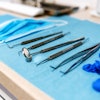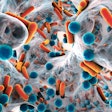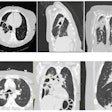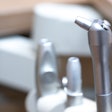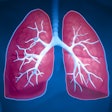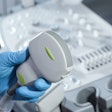Smart dental biomaterials may be a more effective approach against dental infections compared to traditional treatments, according to a review recently published in the International Journal of Biological Macromolecules.
However, more research is needed to improve the potential of biomaterials, which combine antimicrobial, biofilm-disrupting, and regenerative functions, the authors wrote.
“The advancement of biomaterials for dental infections has developed as a promising strategy to address the limitations of conventional treatment methods,” wrote the authors, led by Zebo Jiang of the Zhuhai Hospital of Integrated Traditional Chinese and Western Medicine in China (Int J Biol Macromol, September 1, 2025, Vol. 327:1, 147293).
For this review, researchers examined the development and use of biomaterials for treating bacterial dental infections, with an emphasis on preventing biofilm formation and improving antimicrobial effectiveness. Additionally, the review highlighted recent advances in smart and bioactive materials that support tissue regeneration, they wrote.
A key focus in antimicrobial biomaterial development is preventing or eliminating harmful microbes, such as Streptococcus mutans (S. mutans), which are linked to caries, and Candida albicans (C. albicans), which contribute to denture stomatitis. While most caries materials are tested mainly against S. mutans, caries formation results from complex interactions among multiple microorganisms, with S. mutans and C. albicans working together to worsen disease progression.
New antimicrobial strategies target virulent genes or disrupt bacterial communication through quorum quenching, which blocks or breaks down signaling molecules needed for biofilm growth. Since biofilms depend on extracellular polymeric substances (EPS) for protection, using enzymes to degrade EPS has shown promise, the researchers wrote.
In regenerative dentistry, 3D bioprinting has emerged as a transformative tool by creating complex, patient-specific tissue structures using bioinks composed of cells, extracellular matrix, and growth factors. Biomaterial scaffolds, 3D structures that mimic the extracellular matrix, can provide a framework to support cell growth and tissue regeneration.
The study had limitations. Widespread adoption of biomaterials is limited by challenges in scaling production, reducing costs, and meeting regulatory requirements, the authors added.
“With the increasing prevalence of antibiotic-resistant pathogens and biofilm-associated infections, biomaterials offer innovative solutions by integrating antimicrobial, biofilm-disrupting, and regenerative properties,” they wrote.


